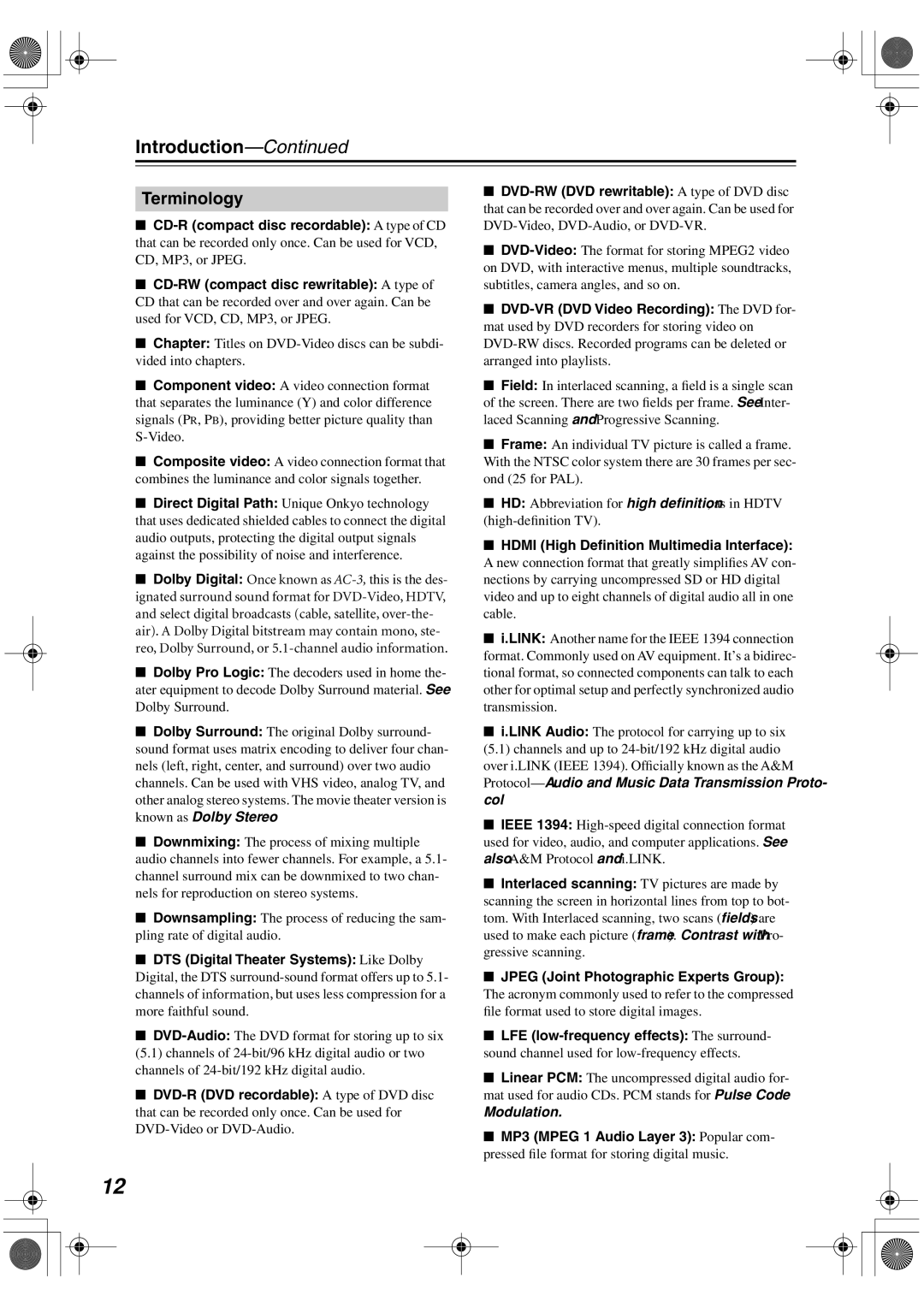DV-SP1000E specifications
The Onkyo DV-SP1000E is a notable addition to the realm of high-end multi-format DVD players, embodying a commitment to quality in both playback and design. This device signifies Onkyo's ambition to deliver an exceptional audio-visual experience, encapsulating versatility, cutting-edge technology, and robust performance in a stylish package.One of the standout features of the DV-SP1000E is its ability to handle a wide array of media formats. It supports not only standard DVDs but also CD, CD-R, CD-RW, DVD-Audio, and even Video CD formats. This diversity makes it a crucial component in any multimedia setup, allowing users to enjoy their favorite movies, music, and more without the need for multiple players.
The design of the DV-SP1000E is sleek and sophisticated, featuring a sturdy chassis that minimizes vibrations, which is imperative for high-quality sound reproduction. It incorporates a high-precision 12-bit digital-to-analog converter, ensuring clarity and detail in audio output. The player is also equipped with advanced circuitry that aids in reducing interference and improving the overall sound quality.
In terms of video capabilities, the Onkyo DV-SP1000E supports progressive scan output, which enhances image quality by providing a clearer and crisper picture compared to standard interlaced output. The player also boasts various video outputs, including component video and HDMI, allowing seamless integration into modern home theater systems.
One of the notable technologies employed in the DV-SP1000E is its "Pure Audio" mode. This feature allows users to bypass unnecessary video processing, dedicating the player’s resources solely to audio playback. This results in a purer listening experience, particularly valuable for audiophiles who prioritize sound quality.
Furthermore, the player’s compatibility with both DVD-Audio and SACD formats showcases Onkyo's attention to high-fidelity audio. This means users can indulge in superior sound quality from their music collection, leveraging the full potential of high-resolution audio formats.
The Onkyo DV-SP1000E is also user-friendly, featuring an intuitive remote control and straightforward setup processes that enhance the overall user experience. Its robust build quality and well-considered engineering make it a reliable choice for anyone looking to elevate their home entertainment system.
In conclusion, the Onkyo DV-SP1000E is a versatile and technologically sophisticated DVD player that delivers high-quality audio and video playback, catering to both movie enthusiasts and audio connoisseurs alike. Its extensive format support, cutting-edge technology, and elegant design solidify its position as a valuable addition to any home entertainment setup.

